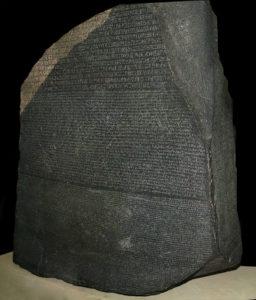 Modern day statement analysis was pioneered by the FBI starting in the 1970’s. Their researchers first determined what a truthful statement typically contained and then what deviations were indicators of potential lies.
Modern day statement analysis was pioneered by the FBI starting in the 1970’s. Their researchers first determined what a truthful statement typically contained and then what deviations were indicators of potential lies.
Last month’s Newsletter provided an introduction to analyzing written statements for truthfulness; these types of lies are more difficult to spot unless the writer is present when the statement is being analyzed. If present, he or she can provide visual and spoken behaviorial cues which will allow the intervewer or analyzer to see and hear other evidence of a lie.
Here are some additional Red Flags of potential deception to supplement that which was presented earlier:
- Written statements should contain an introduction, a description of the event and then an ending or an explanation of what took place after the event. Normally, the introduction or background will take up approximately 20-30% of the statement. The event explanation (the most important part of the document) will take 40-60%, and the concluding section should add another 20-30%. Pay special attention if one section is significantly longer or shorter than these norms since it may signify that there could be one or several omissions or that the statement is being padded with falsehoods.
- Most people tend to speak and write in sentences of between 10 and 15 words. When people feel anxious about an issue, they tend to speak or write in sentences that are either significantly longer or shorter than the norm. Examine the statement by counting total words and dividing by the number of sentences. This will give you the Mean Length of Utterance (MLU) or the subject’s average sentence length. Pay particular attention to any sentences whose length differs significantly from the subject’s MLU.
- Those who fabricate a story, tend to keep their statements simple and brief. Few liars have sufficient imagination to make up detailed descriptions of fictious events. Plus, a deceptive person wants to minimize the risk that an investigator will discover evidence contradicting any aspect of his or her statement. The fewer facts that might be provided falsely, the better. Wendell Rudacille, the author of Identifying Lies in Disguise refers to seemingly inconsequential details as “tangential verbal data” and considers their presence to be prime indicators that subjects are telling the truth.
To learn more about detecting lies in written statements, check out the following:
- “Statement Analysis: What Do Suspects’ Words Really Reveal?” FBI Law Enforcement Journal, October, 1996).
- “The 10 Tell-Tale Signs of Deception Words Reveal,” Paul M. Clikeman, Ph.D., CFE, ACFE Fraud Magazine, January/February, 2012.
- Identifying Lies in Disguise, Wendell Rudacille, (Kendall/Hunt, 1994).
Research North, Inc. (RNI), is a professional private detective service providing support to the business community, the insurance industry and individuals in Michigan and Wisconsin since 1981. The company also offers pre-employment background checks to small and medium sized businesses through a subsidiary called Backgroundcheckswork.com that is fully staffed by professional investigators who are retired from law enforcement.
Delivering Information That Works For You
INSURED • QUALIFIED • THOROUGH • RELIABLE • CONFIDENTIAL • FAST